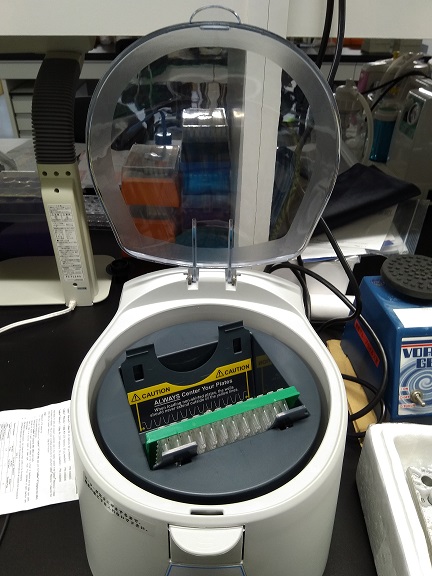DNA polymerase
PCR performance is often related to the thermostable DNA polymerase, so enzyme selection is critical to success. One of the main factors affecting PCR specificity is the fact that Taq DNA polymerase has residual activity at low temperatures. Primers can anneal nonspecifically to DNA during reaction setup, allowing the polymerase to synthesize nonspecific product. The problem of nonspecific products resulting from mis-priming can be minimized by using a “hot-start” enzyme. Using a hot-start enzyme ensures that DNA polymerase is not active during reaction setup and the initial DNA denaturation step.
Reverse transcriptase
The reverse transcriptase (RT) is as critical to the success of qRT-PCR as the DNA polymerase. It is important to choose an RT that not only provides high yields of full-length cDNA, but also has good activity at high temperatures. High-temperature performance is also very important for denaturation of RNA with secondary structure. In one-step qRT-PCR, an RT that retains its activity at higher temperatures allows you to use a GSP with a high melting temperature (Tm), increasing specificity and reducing background.
Deoxynucelotide triphosphates (dNTPs)
dNTPs serve as building blocks for the synthesis of new DNA strands during DNA replication in a PCR reaction. It is a good idea to purchase both the dNTPs and the thermostable DNA polymerase from the same vendor, as it is not uncommon to see a loss in sensitivity of one full threshold cycle (Ct) in experiments that employ these reagents from separate vendors.
There are 4 types of dNTPs
- deoxyadenosine triphosphate (dATP),
- deoxythymidine triphosphate (dTTP),
- deoxyguanosine triphosphate (dGTP), and
- deoxycytidine triphosphate (dCTP)
Magnesium concentration
In real-time PCR, magnesium chloride or magnesium sulfate is typically used at a final concentration of 3 mM. This concentration works well for most targets; however, the optimal magnesium concentration may vary between 3 and 6 mM.
Good experimental technique
Do not underestimate the importance of good laboratory technique. It is best to use dedicated equipment and solutions for each stage of the reactions, from preparation of the template to post-PCR analysis. The use of aerosolbarrier tips and screwcap tubes can help decrease cross-contamination problems. To obtain tight data from replicates (ideally, triplicates), prepare a master mix that contains all the reaction components except sample. The use of a master mix reduces the number of pipetting steps and, consequently, reduces the chances of cross-well contamination and other pipetting errors.
Template
Use 10 to 1,000 copies of template nucleic acid for each real-time PCR reaction. This is equivalent to approximately 100 pg to 1 μg of genomic DNA, or cDNA generated from 1 pg to 100 ng of total RNA. Excess template may also bring higher contaminant levels that can greatly reduce PCR efficiency. Depending on the specificity of the PCR primers for cDNA rather than genomic DNA, it may be important to treat RNA templates to reduce the chance that they contain genomic DNA contamination. One option is to treat the template with DNase I. Pure, intact RNA is essential for full-length, high-quality cDNA synthesis and may be important for accurate mRNA quantification. RNA should be devoid of any RNase contamination, and aseptic conditions should be maintained. Total RNA typically works well in qRT-PCR; isolation of mRNA is typically not necessary, although it may improve the yield of specific cDNAs.
Source
www.lifetechnologies.com
Discover more from #1 Microbiology Resource Hub
Subscribe to get the latest posts to your email.



